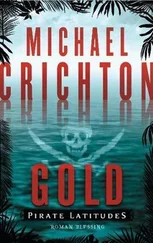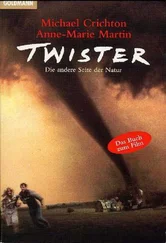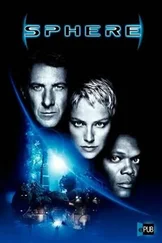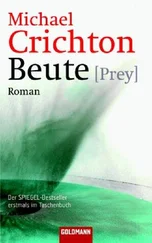Michael Crichton - Jurassic Park
Здесь есть возможность читать онлайн «Michael Crichton - Jurassic Park» весь текст электронной книги совершенно бесплатно (целиком полную версию без сокращений). В некоторых случаях можно слушать аудио, скачать через торрент в формате fb2 и присутствует краткое содержание. Жанр: Детская проза, на английском языке. Описание произведения, (предисловие) а так же отзывы посетителей доступны на портале библиотеки ЛибКат.
- Название:Jurassic Park
- Автор:
- Жанр:
- Год:неизвестен
- ISBN:нет данных
- Рейтинг книги:4 / 5. Голосов: 2
-
Избранное:Добавить в избранное
- Отзывы:
-
Ваша оценка:
- 80
- 1
- 2
- 3
- 4
- 5
Jurassic Park: краткое содержание, описание и аннотация
Предлагаем к чтению аннотацию, описание, краткое содержание или предисловие (зависит от того, что написал сам автор книги «Jurassic Park»). Если вы не нашли необходимую информацию о книге — напишите в комментариях, мы постараемся отыскать её.
Jurassic Park — читать онлайн бесплатно полную книгу (весь текст) целиком
Ниже представлен текст книги, разбитый по страницам. Система сохранения места последней прочитанной страницы, позволяет с удобством читать онлайн бесплатно книгу «Jurassic Park», без необходимости каждый раз заново искать на чём Вы остановились. Поставьте закладку, и сможете в любой момент перейти на страницу, на которой закончили чтение.
Интервал:
Закладка:
"No, why?"
"Let me know, my friend, if you do."
The Beach
Marty Guitierrez sat on the beach and watched the afternoon sun fall lower in the sky, until it sparkled harshly on the water of the bay, and its rays reached beneath the palm trees, to where he sat among the mangroves, on the beach of Cabo Blanco. As best he could determine, he was sitting near the spot where the American girl had been, two days before.
Although it was true enough, as he had told the Bowmans, that lizard bites were common, Guitierrez had never heard of a basilisk lizard biting anyone. And he had certainly never heard of anyone being hospitalized for a lizard bite. Then, too, the bite radius on Tina's arm appeared slightly too large for a basilisk. When he got back to the Carara station, he had checked the small research library there, but found no reference to basilisk lizard bites. Next he checked International BioSciences Services, a computer database in America, But he found no references to basilisk bites, or hospitalization for lizard bites.
He then called the medical officer in Amaloya, who confirmed that a nine-day-old infant, sleeping in its crib, had been bitten on the foot by an animal the grandmother-the only person actually to see it-claimed was a lizard. Subsequently the foot had become swollen and the infant had nearly died. The grandmother described the lizard as green with brown stripes. It had bitten the child several times before the woman frightened it away.
"Strange," Guitierrez had said.
"No, like all the others," the medical officer replied, adding that he had heard of other biting incidents: A child in Vasquez, the next village up the coast, had been bitten while sleeping. And another in Puerta Sotrero. All these incidents had occurred in the last two months. All had involved sleeping children and infants.
Such a new and distinctive pattern led Guitierrez to suspect the presence of a previously unknown species of lizard. This was particularly likely to happen in Costa Rica. Only seventy-five miles wide at its narrowest point, the country was smaller than the state of Maine. Yet, within its limited space, Costa Rica had a remarkable diversity of biological habitats: seacoasts on both the Atlantic and the Pacific; four separate mountain ranges, including twelve-thousand-foot peaks and active volcanoes; rain forests, cloud forests, temperate zones, swampy marshes, and arid deserts. Such ecological diversity sustained an astonishing diversity of plant and animal life. Costa Rica had three times as many species of birds as all of North America. More than a thousand species of orchids. More than five thousand species of insects.
New species were being discovered all the time at a pace that had increased in recent years, for a sad reason. Costa Rica was becoming deforested, and as jungle species lost their habitats, they moved to other areas, and sometimes changed behavior as well.
So a new species was perfectly possible. But along with the excitement of a new species was the worrisome possibility of new diseases. Lizards carried viral diseases, including several that could be transmitted to man. The most serious was central saurian encephalitis, or CSE, which caused a form of sleeping sickness in human beings and horses. Guitierrez felt it was important to find this new lizard, if only to test it for disease.
Sitting on the beach, he watched the sun drop lower, and sighed. Perhaps Tina Bowman had seen a new animal, and perhaps not. Certainly Guitierrez had not. Earlier that morning, he had taken the air pistol, loaded the clip with ligamine darts, and set out for the beach with high hopes. But the day was wasted. Soon he would have to begin the drive back up the hill from the beach; he did not want to drive that road in darkness.
Guitierrez got to his feet and started back up the beach. Farther along, he saw the dark shape of a howler monkey, ambling along the edge of the mangrove swamp. Guitierrez moved away, stepping out toward the water. If there was one howler, there would probably be others in the trees overhead, arid howlers tended to urinate on intruders.
But this particular howler monkey seemed to be alone, and walking slowly, and pausing frequently to sit on its haunches. The monkey had something in its mouth. As Guitierrez came closer, he saw it was eating a lizard. The tail and the hind legs drooped from the monkey's jaws. Even from a distance, Guitierrez could see the brown stripes against the green.
Guitierrez dropped to the ground and aimed the pistol. The howler monkey, accustomed to living in a protected reserve, stared curiously. He did not run away, even when the first dart whined harmlessly past him. When the second dart struck deep in the thigh, the howler shrieked in anger and surprise, dropping the remains of its meal as it fled into the jungle.
Guitierrez got to his feet and walked forward. He wasn't worried about the monkey; the tranquilizer dose was too small to give it anything but a few minutes of dizziness. Already he was thinking of what to do with his new find. Guitierrez himself would write the preliminary report, but the remains would have to be sent back to the United States for final positive identification, of course. To whom should he send it? The acknowledged expert was Edward H. Simpson, emeritus professor of zoology at Columbia University, in New York. An elegant older man with swept-back white hair, Simpson was the world's leading authority on lizard taxonomy. Probably, Marty thought, he would send his lizard to Dr. Simpson.
New York
Dr. Richard Stone, head of the Tropical Diseases Laboratory of Columbia University Medical Center, often remarked that the name conjured up a grander place than it actually was. In the early twentieth century, when the laboratory occupied the entire fourth floor of the Biomedical Research Building, crews of technicians worked to eliminate the scourges of yellow fever, malaria, and cholera. But medical successes-and research laboratories in Nairobi and Sao Paulo-had left the TDL a much less important place than it once was. Now a fraction of its former size, it employed only two full-time technicians, and they were primarily concerned with diagnosing illnesses of New Yorkers who had traveled abroad. The lab's comfortable routine was unprepared for what it received that morning.
"Oh, very nice," the technician in the Tropical Diseases Laboratory said, as she read the customs label. "Partially masticated fragment of unidentified Costa Rican lizard." She wrinkled her nose. "This one's all yours, Dr. Stone."
Richard Stone crossed the lab to inspect the new arrival. "Is this the material from Ed Simpson's lab?"
"Yes," she said. "But I don't know why they'd send a lizard to us.
"His secretary called," Stone said. "Simpson's on a field trip in Borneo for the summer, and because there's a question of communicable disease with this lizard, she asked our lab to take a took at it. Let's see what we've got."
The white plastic cylinder was the size of a half-gallon milk container, it had locking metal latches and a screw top. It was labeled "International Biological Specimen Container" and plastered with stickers and warnings in four languages. The warnings were intended to keep the cylinder from being opened by suspicious customs officials.
Apparently the warnings had worked; as Richard Stone swung the big light over, he could see the seals were still intact. Stone turned on the air handlers and pulled on plastic gloves and a face mask. After all, the lab had recently identified specimens contaminated with Venezuelan equine fever, Japanese B encephalitis, Kyasanur Forest virus, Langat virus, and Mayaro. Then he unscrewed the top.
There was the hiss of escaping gas, and white smoke boiled out. The cylinder turned frosty cold. Inside he found a plastic zip-lock sandwich bag, containing something green. Stone spread a surgical drape on the table and shook out the contents of the bag. A piece of frozen flesh struck the table with a dull thud.
Читать дальшеИнтервал:
Закладка:
Похожие книги на «Jurassic Park»
Представляем Вашему вниманию похожие книги на «Jurassic Park» списком для выбора. Мы отобрали схожую по названию и смыслу литературу в надежде предоставить читателям больше вариантов отыскать новые, интересные, ещё непрочитанные произведения.
Обсуждение, отзывы о книге «Jurassic Park» и просто собственные мнения читателей. Оставьте ваши комментарии, напишите, что Вы думаете о произведении, его смысле или главных героях. Укажите что конкретно понравилось, а что нет, и почему Вы так считаете.








